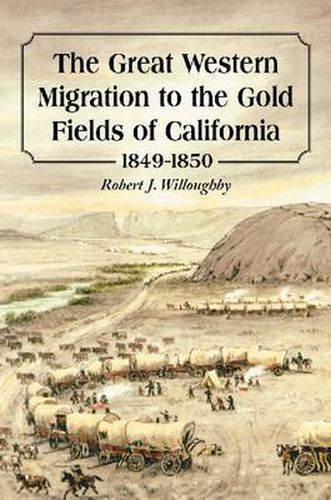Readings Newsletter
Become a Readings Member to make your shopping experience even easier.
Sign in or sign up for free!
You’re not far away from qualifying for FREE standard shipping within Australia
You’ve qualified for FREE standard shipping within Australia
The cart is loading…






The journey west, from the Missouri River to the Pacific coast, was made by some quarter of a million Americans during the 1840s and 1850s, and stands as one of the great human adventure stories of all time. When gold was discovered at Sutter’s Mill, California, in 1848, the immigration took on an urgency and a scope that would never be matched again, though the numbers of migrants was eventually equaled over time by the slower pace of those who went to Oregon and followed later to California to put down more permanent roots. This work draws heavily from the diaries of 17 men and women who made the four month, 2,000 mile trek to California during 1849 and 1850. The text is divided into three main parts. Part One covers travel from the Missouri River to Fort Laramie, Part Two covers Fort Laramie to Fort Hall and Salt Lake City, and Part Three covers the trek from there to the Sierra Nevadas. Each part has chapters that detail specific parts of the trail, sites, or locations where the migrants found something important to write about. The diarists’ accounts tell of the adventures, hardships, desires, concerns, deprivations, sicknesses, deaths along the way, and of crossing the last great obstacle–the
Elephant,
as many of them called it–the high ridge of the Sierra Nevada Mountains.
$9.00 standard shipping within Australia
FREE standard shipping within Australia for orders over $100.00
Express & International shipping calculated at checkout
The journey west, from the Missouri River to the Pacific coast, was made by some quarter of a million Americans during the 1840s and 1850s, and stands as one of the great human adventure stories of all time. When gold was discovered at Sutter’s Mill, California, in 1848, the immigration took on an urgency and a scope that would never be matched again, though the numbers of migrants was eventually equaled over time by the slower pace of those who went to Oregon and followed later to California to put down more permanent roots. This work draws heavily from the diaries of 17 men and women who made the four month, 2,000 mile trek to California during 1849 and 1850. The text is divided into three main parts. Part One covers travel from the Missouri River to Fort Laramie, Part Two covers Fort Laramie to Fort Hall and Salt Lake City, and Part Three covers the trek from there to the Sierra Nevadas. Each part has chapters that detail specific parts of the trail, sites, or locations where the migrants found something important to write about. The diarists’ accounts tell of the adventures, hardships, desires, concerns, deprivations, sicknesses, deaths along the way, and of crossing the last great obstacle–the
Elephant,
as many of them called it–the high ridge of the Sierra Nevada Mountains.